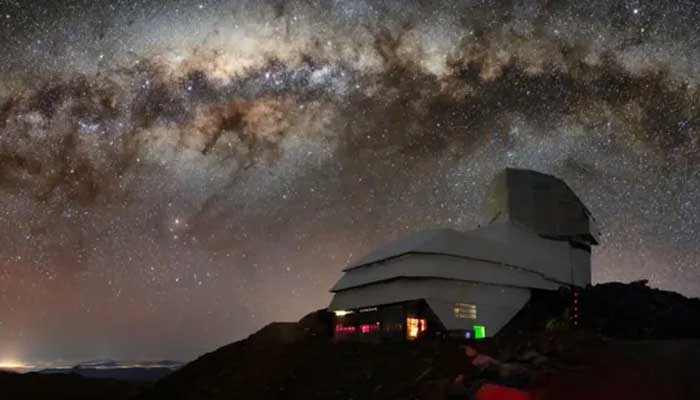Select Language:

WASHINGTON: The team behind the long-anticipated Vera Rubin Observatory in Chile released their inaugural images on Monday, showcasing stunning perspectives of star-forming regions and far-off galaxies.
After more than 20 years in development, the massive US-funded telescope is installed at the peak of Cerro Pachón in central Chile, where dark skies and dry conditions offer optimal opportunities for cosmic observation.
One of the first images presented is a composite of 678 exposures gathered in just seven hours, depicting the Trifid Nebula and the Lagoon Nebula — both located several thousand light-years from our planet — shimmering in vibrant pink hues set against bright orange-red backgrounds.
This image reveals these stellar nurseries within our Milky Way with unparalleled clarity, highlighting features that were previously subtle or invisible.
Another image provides a panoramic view of the Virgo Cluster of galaxies.
The team also released a video dubbed the “cosmic treasure chest,” which starts off with a close-up of two galaxies before gradually zooming out to reveal roughly 10 million others.
“The Rubin Observatory represents a commitment to our future, laying down a foundation of knowledge today for our children to build upon tomorrow,” stated Michael Kratsios, director of the White House Office of Science and Technology Policy.
Equipped with an advanced 8.4-meter telescope and the largest digital camera ever constructed, the Rubin Observatory features a robust data-processing framework.
This year, it will kick off its flagship initiative, the Legacy Survey of Space and Time (LSST). Over the next ten years, it will conduct nightly scans of the night sky, capturing even the faintest visible changes with extraordinary precision.
Named in honor of pioneering American astronomer Vera C. Rubin, whose studies provided the first solid evidence for the existence of dark matter — a mysterious substance that doesn’t emit light but influences galaxies gravitationally.
Dark energy, another enigmatic and potent force, is believed to drive the accelerating expansion of the universe. Together, dark matter and dark energy are thought to constitute 95 percent of the universe; yet, their true nature remains a mystery.
The observatory, a collaborative project of the US National Science Foundation and Department of Energy, has also been recognized as one of the most powerful tools ever created for tracking asteroids.
In only ten hours of observations, the Rubin Observatory identified 2,104 previously unrecorded asteroids in our solar system, including seven near-Earth objects — all of which pose no risk.
For context, existing ground- and space-based observatories collectively identify about 20,000 new asteroids each year.
The Rubin Observatory is also poised to be the most effective in recognizing interstellar objects traversing our solar system.
More images from the observatory are anticipated to be released later Monday morning.






